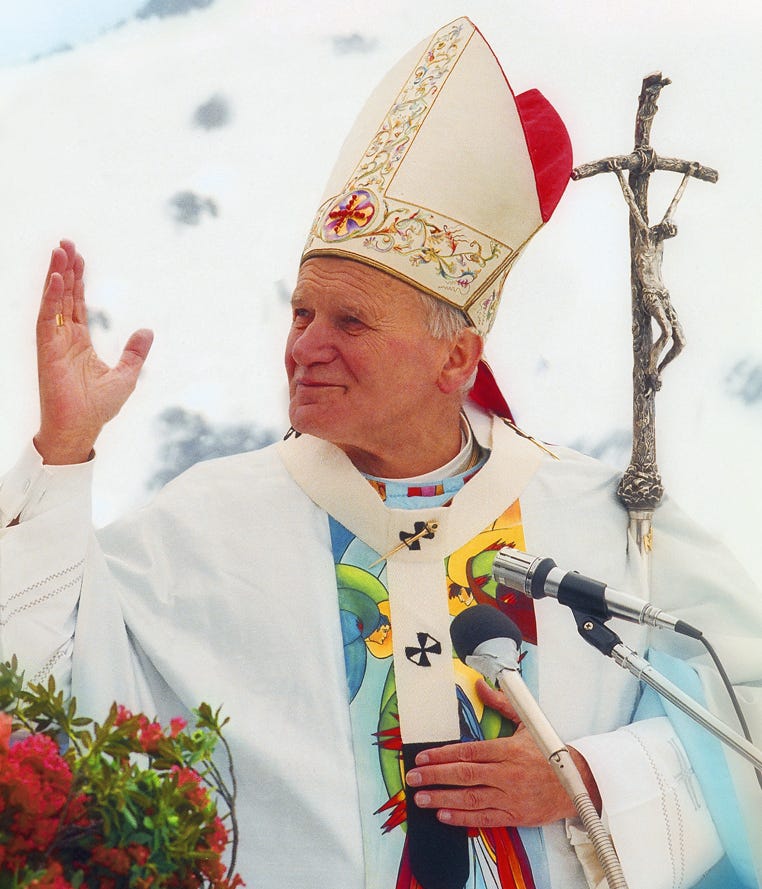Pope John Paul II, deeply influenced by his personal spirituality and theological formation, held mystical theology in high regard as a vital dimension of Christian life. He viewed it not as an esoteric or elitist pursuit but as an invitation to all believers to enter into a profound, personal encounter with God. Drawing from his own Carmelite spirituality and the writings of mystics like St. John of the Cross and St. Teresa of Ávila, he emphasized that mystical theology is rooted in the transformative power of divine love. In his encyclicals and addresses, such as Novo Millennio Ineunte (2001), he called for a renewed focus on contemplative prayer, which he saw as the heart of mysticism, enabling Christians to experience God’s presence intimately and live out their faith with greater authenticity.
For John Paul II, mystical theology was inseparable from the pursuit of holiness, which he considered the universal vocation of all Christians. In his 1996 apostolic letter Vita Consecrata, he highlighted the contemplative life as a prophetic witness to the transcendence of God, with mystics serving as guides who illuminate the path to union with the divine. He believed that mystical experience, grounded in Scripture and the sacraments, particularly the Eucharist, fosters a deeper understanding of the mysteries of faith. This theology, he argued, counters the secular tendency to reduce religion to mere ethics or ritual, offering instead a dynamic relationship with the living God that transforms the individual and radiates outward to the world.
John Paul II also saw mystical theology as a bridge between doctrine and lived experience. In his 1986 encyclical Dominum et Vivificantem, he explored the role of the Holy Spirit in guiding believers toward a deeper, experiential knowledge of God, which he described as a “mystical” participation in the Trinitarian life. He emphasized that this knowledge transcends intellectual comprehension, requiring humility, purity of heart, and openness to grace. By integrating mystical insights with dogmatic theology, he sought to show that the mysteries of faith—such as the Incarnation and the Trinity—are not abstract concepts but realities to be encountered through prayer and contemplation.
In his engagement with interreligious dialogue, John Paul II recognized parallels between Christian mysticism and the contemplative traditions of other faiths, as seen in his 1986 Assisi Prayer for Peace. While firmly rooted in Christocentric theology, he acknowledged that the human yearning for transcendence is universal, and mystical theology can serve as a point of convergence in fostering mutual understanding. He cautioned, however, against syncretism, stressing that Christian mysticism is uniquely shaped by the revelation of Christ. His 1998 encyclical Fides et Ratio further underscored that mystical theology complements reason, offering a “sapiential” dimension that enriches philosophical and theological inquiry.
Finally, John Paul II’s emphasis on the “new evangelization” was deeply tied to his vision of mystical theology. He believed that a Church renewed by contemplative souls would be better equipped to proclaim the Gospel in a world marked by materialism and spiritual hunger. In his writings, such as Crossing the Threshold of Hope (1994), he urged Catholics to cultivate a mysticism of everyday life, where ordinary tasks become opportunities for divine encounter. By championing the accessibility of mystical theology, John Paul II left a legacy that continues to inspire believers to seek God with fervor, trusting that such pursuit leads to both personal fulfillment and the renewal of the Church’s mission.





Great to see an exposition of John Paul II’s mystical theology. It breathes incarnational mysticism, the raw truth that God is revealed not in escape from flesh, but through it. The Word made flesh… divinity etched into sinew, sweat, and saliva. For him, the Eucharist is the consummation of this mystery. God not just contemplated, but consumed, His presence metabolized into our very cells.
This is no abstract spirituality. Incarnational mysticism demands we meet God in the grit of existence: in labor, in love, in suffering. Holiness, then, is not transcendence of the body, but its sanctification. Every moment becomes sacramental, charged with the nearness of a God who chose to be touched. Yet this mysticism remains Christocentric, an insistence on particularity. The infinite dwells in a specific body, a specific death, a specific resurrection. To kneel before this mystery is to embrace a God who refuses to be anything but here, now, flesh.